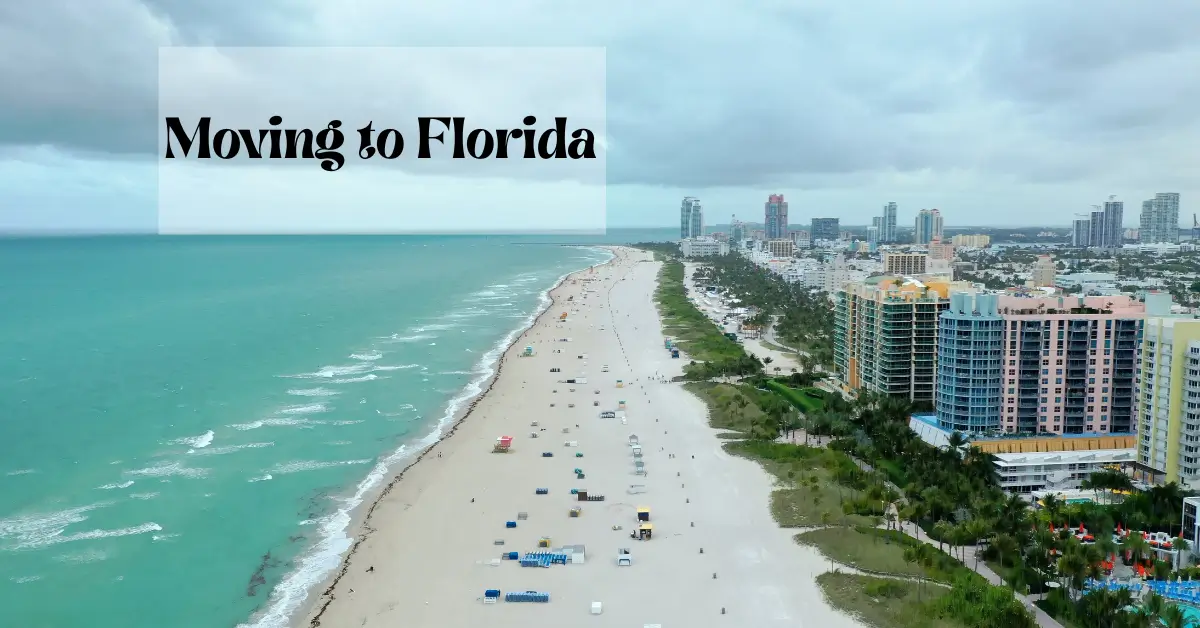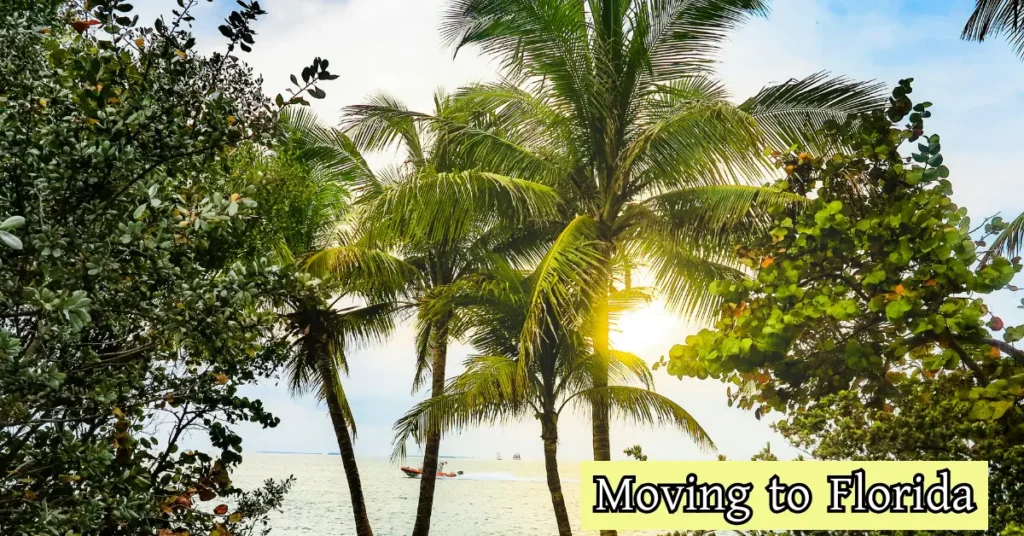Moving to Florida was one of the biggest decisions of my life—and one of the most rewarding. Like many others, I was drawn by the allure of sunny skies, beach towns, and year-round outdoor living. But there’s more to Florida than palm trees and piña coladas. Living here requires some serious planning, and knowing what to expect will help you adjust smoothly.
Whether you’re considering a cross-country relocation or retiring to the coast, I’ve gathered everything I wish I had known before making the move. This is not just a list of sunny highlights—this is a practical, firsthand guide to help you weigh the real pros, real challenges, and real lifestyle changes of living in the Sunshine State.
Understanding the Florida Lifestyle
Before diving into logistics like housing or jobs, it’s essential to understand the Florida way of life—which can vary wildly depending on where you settle.
Definition List
- Pace of life – Relaxed in beach towns, fast-paced in cities like Miami or Tampa.
- Cultural diversity – Strong Caribbean, Latin American, and Southern influences, especially in South Florida.
- Social atmosphere – Friendly and open in most areas, but very transient. Many locals are from out-of-state.
After living here for several years, I can confidently say that choosing the right region makes all the difference. Your experience in North Florida will be very different from life in the Keys or the Panhandle.
Choosing Where to Live in Florida
Florida isn’t just one place—it’s many different micro-worlds bundled into one long peninsula. Here’s a breakdown I often share with friends looking to move:
North Florida
▪ Milder summers and occasional winter chills
▪ Southern-style culture and slower pace
▪ More affordable housing and quieter living
▪ Cities: Jacksonville, Tallahassee, Gainesville
Central Florida
▪ Big attractions like Disney, Universal, and lots of tourism
▪ More suburban and family-friendly
▪ High job availability in hospitality, healthcare, and logistics
▪ Cities: Orlando, Lakeland, Clermont
South Florida
▪ Fast-paced, international vibe
▪ More expensive housing and heavier traffic
▪ Strong cultural scene and nightlife
▪ Cities: Miami, Fort Lauderdale, West Palm Beach
Gulf Coast and Panhandle
- ▪ Laid-back and scenic, with small-town charm
- ▪ Hurricane-prone but beautiful beaches
- ▪ Slower development and less congestion
- ▪ Cities: Naples, Cape Coral, Pensacola
Tip: If you’re unsure, rent short-term in two different regions before deciding. I rented in both Central Florida and the Gulf Coast before buying—and it saved me from choosing the wrong spot.
Climate and Weather Reality
It’s true that the sunshine here is intoxicating, but there’s a learning curve when it comes to Florida’s weather.
Definition List
- Sunshine – 230+ sunny days per year, depending on the region.
- Humidity – High year-round, especially oppressive from June to September.
- Rain – Afternoon thunderstorms are routine in the summer.
- Hurricanes – June through November, with peak activity from August to October.
What many don’t realize:
▪ You’ll need flood insurance in many counties even if it’s not legally required.
▪ Storm prep is real—hurricane shutters, backup batteries, and stocked pantries are the norm.
▪ Mold is a frequent issue in older or poorly ventilated homes.
Traveler Tip: Don’t move in August if you’re not used to heat. Start with a spring or winter visit to get acclimated.
Cost of Living and Income Tax
Florida often gets advertised as affordable—but that depends on where you land and your lifestyle.
Here’s a more realistic breakdown based on my actual relocation from Georgia:
Florida Cost of Living vs National Average
| Expense Category | % Difference vs National Average |
|---|---|
| Housing | +7% (but varies by city) |
| Utilities | +1% |
| Groceries | +3% |
| Transportation | +13% |
| Healthcare | +2% |
No State Income Tax
- One of the biggest financial perks in Florida is the lack of state income tax. This saves thousands for high earners or retirees with pensions and investments.
- However, property taxes and insurance can be high, especially near water.
Pro Tip: Get an updated insurance quote before buying property—rates can vary dramatically within the same zip code.
Housing Market Insights
During my home search, I was surprised how drastically prices differed not just by city, but by neighborhood.
Definition List
- New construction – Plentiful in Central Florida suburbs, often more energy efficient.
- Waterfront homes – Gorgeous but come with high insurance and strict regulations.
- 55+ Communities – Ideal for retirees, with built-in amenities and events.
Affordable Cities for Newcomers
▪ Palm Bay
▪ Ocala
▪ Cape Coral
▪ Port St. Lucie
▪ Gainesville
If you’re planning to buy, here’s what my real estate agent told me—and it still rings true:
“In Florida, you don’t just buy a home—you buy into a lifestyle. Make sure it fits before signing the dotted line.”
Job Market and Remote Work
When I first moved to Florida, I was working remotely and thought it would be easy to stay that way. What I quickly discovered is that the state’s job market is highly regional.
Definition List
- Tourism and hospitality – Dominant in Orlando, Miami, and coastal towns.
- Healthcare – In-demand everywhere, especially in retiree-heavy cities like Naples or Sarasota.
- Logistics and transportation – Growing around Central Florida due to its location and distribution hubs.
- Tech and remote work – Increasing, but concentrated in major metros like Tampa and Miami.
What your competitor missed:
Many people move here hoping to maintain a big-city salary while working remotely. But beware: internet quality and co-working spaces vary wildly, especially in smaller beach towns or the Panhandle.
Tips for job seekers:
▪ Research local job boards before moving—some areas may not support your field.
▪ Set up Florida residency quickly if job hunting locally, as many roles prioritize in-state applicants.
▪ If working remotely, test Wi-Fi reliability before signing a long-term lease.
Healthcare and Insurance
One topic that’s often skipped—but shouldn’t be—is healthcare access. After relocating, I had to switch insurance, and it was not as seamless as expected.
What you should know:
▪ Florida is ranked mid-tier in terms of healthcare quality but varies by region.
▪ Cities like Jacksonville, Tampa, and Miami have top hospitals; rural areas may have limited access.
▪ Medicare options are strong here, and many retirees find Florida’s senior care robust.
Helpful Tip:
For young families or workers, check if your insurance includes popular Florida providers like AdventHealth or Baptist Health. Some employer plans don’t fully cover them out-of-network.
Transportation and Commuting
If you’re coming from a walkable city or one with public transit, Florida will likely feel car-dependent. In most areas, a car is not optional—it’s essential.
Commuting Facts I Learned Firsthand:
▪ Traffic congestion is a real issue in Miami, Orlando, and Tampa.
▪ Toll roads are common. Get a SunPass as soon as you arrive.
▪ Public transit is minimal outside major metros and isn’t reliable for daily commuting.
How I saved money on transportation:
▪ I moved just outside of the city center to save on rent and used express toll lanes to cut commute time.
▪ Many employers in Orlando and Tampa now allow hybrid work setups—ask before relocating for a job.
Schooling and Education
As someone with two school-aged kids, finding the right school district was a major factor in choosing a location.
Best Tips from My Relocation Experience:
▪ St. Johns County (near St. Augustine) consistently ranks #1 in public education.
▪ Look into school ratings at both county and individual school levels—some districts have large gaps.
▪ Charter schools are growing across the state and often have waitlists. Apply early if considering one.
College and University Options in Florida
| University Name | Location | Notable Strengths |
|---|---|---|
| University of Florida | Gainesville | Research, Engineering |
| Florida State University | Tallahassee | Law, Business, Liberal Arts |
| University of Central Florida | Orlando | Tech, Space Research, Business |
| University of South Florida | Tampa | Medical, Health, International |
| Florida International University | Miami | Global Studies, Finance |
What I wish I knew:
School zoning rules can be strict—even within the same zip code. Make sure your housing address aligns with your desired school before finalizing anything.
Nature and Outdoor Lifestyle
Living in Florida transformed how I spend my free time. The natural beauty here is more than beaches—it’s mangroves, springs, rivers, and preserved parks.
Don’t Miss These Natural Attractions:
▪ Blue Spring State Park – My favorite place to spot manatees in the winter.
▪ Honeymoon Island – A more relaxed alternative to Clearwater Beach with great hiking trails.
▪ Silver Springs – Glass-bottom boat rides and kayaking through crystal-clear waters.
Outdoor Activities You Can Do Year-Round:
▪ Kayaking and paddleboarding in intercoastal waterways
▪ Hiking through subtropical preserves
▪ Snorkeling and diving (especially in the Keys or Devil’s Den)
▪ Fishing off piers, in the ocean, or inland lakes
Insider Tip:
Many state parks offer annual passes for just $60–$120. If you plan to explore frequently, it pays for itself in just a few visits.
Understanding Florida’s Culture and People
One of the biggest surprises when I moved to Florida was how diverse and transient the population is.
Definition List
- Snowbirds – Seasonal residents, mostly retirees from northern states.
- Transplants – People like me who moved here permanently from out of state.
- Locals – Long-time Floridians, often found more in central and northern regions.
Things to Know About Social Life:
▪ Making lasting friendships takes effort—many residents come and go.
▪ Local community events, markets, and meetups are great for building your network.
▪ The culture varies greatly: Naples feels different from St. Petersburg, which feels different from Gainesville.
Excellent! Here’s Chunk 3 — the final part of your markdown-formatted article, including lifestyle costs, transition tips, and the meta description.
Monthly Budget Snapshot for New Residents
After living in Florida for over a year, I put together a more realistic budget that reflects the actual costs of settling down here. This can help you plan your monthly expenses beyond just rent or mortgage payments.
Monthly Living Costs for a Single Adult (2025 Averages)
| Category | Cost Range (USD) |
|---|---|
| Rent (1BR apartment) | $1,100 – $1,800 |
| Utilities (Electric, Water, Internet) | $180 – $250 |
| Car Payment + Insurance | $400 – $700 |
| Groceries | $350 – $500 |
| Healthcare Premiums | $200 – $450 |
| Dining & Entertainment | $150 – $300 |
| Travel/Leisure | $100 – $250 |
Tip: Look into regional co-ops or local farmer’s markets for cheaper produce and fish. Also, many employers offer discounts on gym memberships, local attractions, and transportation cards.
Seasonal Life and Festivals in Florida
One of the things that keeps life interesting here is the constant flow of cultural events. Almost every weekend, you’ll find a festival, street fair, or local gathering—and attending these is one of the easiest ways to feel connected.
Can’t-Miss Events and Festivals
▪ Gasparilla Pirate Festival (Tampa) – Huge costumed parade and music event in January.
▪ SunFest (West Palm Beach) – Music, art, and waterfront fun every spring.
▪ Fantasy Fest (Key West) – A wild, colorful Halloween party for adults.
▪ Mount Dora Craft Fair – My personal favorite for browsing handmade goods in a cozy small-town setting.
Local Pro Tip:
Arrive early or use park-and-ride options to avoid nightmare parking during major festivals. Many cities now offer shuttles from remote lots.
Transitioning Smoothly to Florida Life
Relocating to a new state—especially one with such a different climate and culture—takes time. Based on my own move, here are tips that helped me settle in faster.
Tips for a Smooth Move
▪ Start with a short-term rental so you can explore neighborhoods in person.
▪ Register your car and get a Florida license within 30 days.
▪ Set up flood and windstorm insurance early—many companies have waiting periods.
▪ Join local Facebook groups or community boards to find services, furniture, or social events.
▪ Visit your city hall or town center for local guides and welcome packets.
Don’t forget:
Moving during hurricane season? Make sure your rental or home has shutters or impact windows—and always ask about past flooding issues.
My Final Thoughts on Living in Florida
Florida offers something truly special: a life lived outdoors, surrounded by natural beauty, culture, and opportunity. But it’s not just beaches and sunshine. It’s managing seasonal storms, learning new traffic patterns, adapting to diverse communities, and choosing your lifestyle intentionally.
If you’re thinking about moving to Florida, I encourage you to visit more than once. Explore the quiet Gulf towns, lively coastal cities, and peaceful inland retreats. The right Florida experience is out there—but it’s not one-size-fits-all.
When you take the time to align your priorities with the right location, Florida doesn’t just become your new address—it becomes your new way of life.






